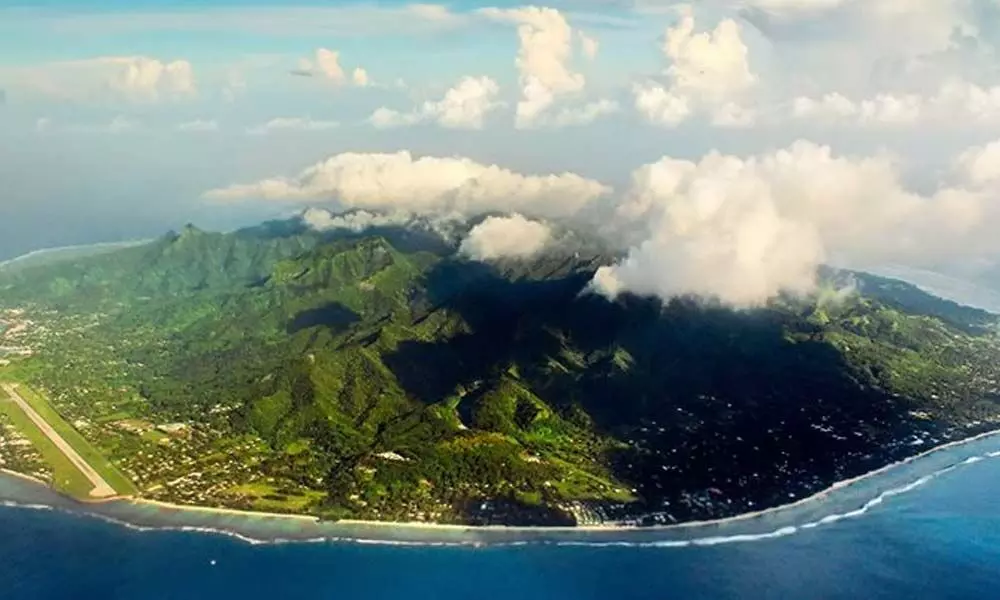Live
- DCA seizes meds for false claim
- World Heritage Day Today: Save! Stone railing of historic Golkonda Fort is crumbling
- Rajamahendravaram: Thrimurthulu verdict puts YSRCP in a spot
- Two students held for selling MDMA drugs
- Sri Venkateswara Swamy Temple celebrates Sri Rama Kalyanam
- Pulivendula: Sharmila to file papers on April 20
- Gold rates in Visakhapatnam slashes, check the rates on 18 April 2024
- IIIT Hyd launches eMSIT
- Gold rates in Vijayawada slashes, check the rates on 18 April 2024
- Gold rates in Hyderabad slashes, check the rates on 18 April 2024
Just In
New Genetic Study Has Traced Out Enormous Expanse Of Ancient Polynesian Sea Voyages

Hans News Service | 23 Sep 2021 11:00 AM GMT

x
Highlights
- The iconic megaliths of Easter Island, as well as the people who built them, have cousins on islands thousands of kilometres to the north and west
- Captain Cook first noted that the people on the Polynesian islands spoke the same language, Ioannidis added, this has been an open problem.
The iconic megaliths of Easter Island, as well as the people who built them, have cousins on islands thousands of kilometres to the north and west, according to a research released Wednesday.
Separate groups of people went out from tiny islands east of Tahiti to inhabit Easter Island, the Marquesas, and Raivavae archipelagos thousands of miles apart yet home to comparable ancient monuments over a 250-year span, according to research. These statues are only found on islands that are genetically linked Alexander Ioannidis of Stanford University, the study's lead author, said AFP.
Since Captain Cook first noted that the people on the Polynesian islands spoke the same language, Ioannidis added, this has been an open problem.
According to the findings, the spread happened quickly over approximately 17 generations – surpassing substantial changes in language or culture that could have acted as markers.
By analysing the genetic material of 430 current-day inhabitants from 21 islands, the researchers were able to piece together the jigsaw of trans-Pacific migration.
Around the year 830, Samoa's outward growth reached Fiji in the west, Tonga in the south, and Raratonga in the east.
Raratonga descendants migrated to present-day Tahiti and the Tuamotu archipelago beyond a few hundred years later.
The most ambitious ventures set out from Tuamotu's little, long-overlooked sand-bar islands, according to Ioannidis.
The Tuamotus, which span an area comparable to the distance between England and Greece, are now sparsely populated, thanks in part to their function as nuclear test grounds.
According to the study, the low-lying islands arose from below sea level barely a few hundred years before Polynesians arrived.
To navigate between these little, ring-like islands, they needed a marine culture, according to Ioannidis.
The time of such expansions corresponds to earlier DNA-based results by Ioannidis and his team, which showed that Native Americans and Polynesians mixed about the year 1200, most likely from the northwestern coast of South America.
The date we discovered for that contact is extremely similar to the dates we discover for these excursions out of the Tuamotus to settle these isolated islands, according to Ioannidis.
Polynesian populations now have a diverse heritage, having ancestors from Europe, Africa, and other areas.
While most ancient genetic research have focused on old DNA samples found from archaeological sites, Ioannidis claimed his team was able to pinpoint telltale patterns hidden in modern DNA. They employed software to analyse data from 430 people from 21 distinct islands to find repeating gene patterns unique to Polynesians, while excluding DNA sequences linked to European or other heritage.
Otherwise, Ioannidis added, you'd just find that the islands with the'most Polynesian' DNA were more linked.
The length of shared segments indicates how many generations elapsed between each settlement since DNA strands shrink as they are recombined across generations.

Next Story
More Stories
ADVERTISEMENT
© 2024 Hyderabad Media House Limited/The Hans India. All rights reserved. Powered by hocalwire.com






